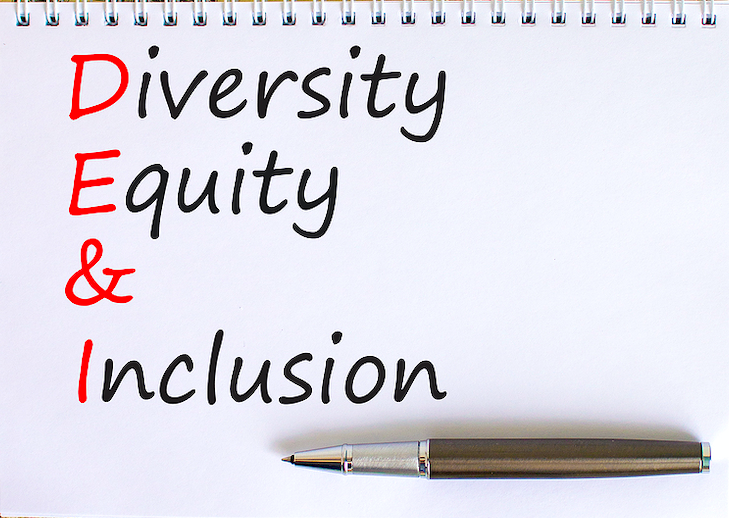I asked TESL Ontario educators to record their thoughts on the question “What are one or two ways that you incorporate diversity, equity, and inclusion in your teaching practice?” This post shares their recordings (see link below) and synthesizes their responses, which highlight the importance of infusing criticality in classroom texts, talks, and tasks.
Critical Texts
The recorded responses (in a shared drive link below) all touch on the importance of selecting teaching materials that represent a diversity of identities and lived experiences.
Tyson Seburn explains how he chooses a variety of online texts written by people representing different races, queerness, ages, body types, neurodivergences, and economic statuses, so that learners can see difference and also see themselves in class materials. Farnaz Karimian also stresses the inclusive impact of using articles or videos that reflect different voices and perspectives in class and of including different names and sociocultural contexts in assessment materials.
In addition to selecting diverse and authentic materials, Leonard Danglli suggests inviting learners to bring in their own materials to class. This can help foster connections to multiple cultural references, which Pelin Irgin believes is a key feature of a syllabus designed with diversity in mind. Dilruba Jahan plans her lessons with all students in mind, scaffolding instructional materials with culturally relevant examples such as religious holidays or practices, which she asks learners about in an initial questionnaire. Alice Sun-mi Kim also uses a class questionnaire to inform her selection of relevant materials and possible cultural examples to include in class. For Celine De Almeida, the curation of varied and culturally relevant materials means including stories and examples that go beyond White settler colonial perspectives and allow all students to feel represented.
When students feel that their identities are represented and respected in class, they can feel more comfortable to engage in critical conversations.
Critical Talks
Several of the responses focus on the promotion of critical thinking and relationship building through class discussion.
Leonard and Farnaz talk about the powerful role of the teacher in implicitly or explicitly incorporating critical topics and conversations related to diversity, equity, and inclusion. As Pelin explains, these discussions can enable exploration of, reflection on, and respect for diverse perspectives in class. In Paramita Dutta’s class, students have opportunities to share and compare their previous life experiences with their new experiences living in Canada, which contributes both to knowledge exchange and a sense of class community. Celine and Dilruba note how meaningful class discussions, which draw on learners’ own examples and experiences, can allow class members to get to know each other while developing critical perspectives and challenging their own assumptions about cultures or individuals.
These outcomes can also be supported by critical classroom tasks.
Critical Tasks
The recordings describe several classroom tasks that can help to develop mutual respect and group belonging.
For instance, Tyson gets learners to critically examine and critique materials to consider how they do or do not see themselves represented – being careful to respect when learners do not want to reveal certain information about themselves. Alice also encourages learners to choose personally meaningful topics for group work, offering opportunities for them to include their own cultures and perspectives without spotlighting any one culture or individual in class.
In order to explore even more cultures and perspectives in class, Pelin invites diverse guest speakers to interact with students. When interacting among themselves, Dilruba has learners establish and follow a class code of conduct for respectfully disagreeing with different viewpoints. She also incorporates icebreaker activities such as creating a poster of students’ names and country flags as a visual reminder that everyone belongs in class. In another icebreaker activity, Farnaz makes sure learners have the chance to share their preferred names and pronouns. Paramita also takes the time to learn the pronunciation of each of her students’ names, which she believes helps to validate learners’ identities.
Incorporating critical texts, talks, and tasks are some of the ways that these educators foster diversity, equity, and inclusion in their teaching practices. What are one or two ways that you incorporate diversity, equity, and inclusion in class?
Please access the recorded responses here: https://drive.google.com/drive/folders/1WbU_M6xWE1hADZ15Ew1r3AtyjX_mPISg
These recordings were produced by the following TESL professionals:
- Alice Sun-mi Kim (she/her), English Language Instructor at University of Toronto https://www.linkedin.com/in/akim9/
- Celine De Almeida (she/her), TESL Toronto Executive Member-at-Large https://www.linkedin.com/in/celinedealmeida/
- Dilruba Jahan (she/her), ESL Teacher linkedin.com/in/dilruba-jahan-85bb4794
- Farnaz Karimian (she/her), EAP/COMM Professor at George Brown College / TESL Toronto President www.linkedin.com/in/farnaz-karimian
- Leonard Danglli, PhD (he/him), Associate Professor of Applied Linguistics and ESL at University of Tirana / Author of “The finest word”, “Business English” and “Secrets of English Pronunciation” www.linkedin.com/in/leonard-danglli-phd-4b060871 leonarddanglli@azi-pordel
- Paramita Dutta, PhD (she/her), LINC/ESL Instructor at Indus Community Services and Halton District School Board duttap@hdsb.ca
- Pelin Irgin (she/her), Assistant Professor of English Language Education at TED University / Community Manager TESOL SPLIS pelin.irgin@tedu.edu.tr
- Tyson Seburn (il/ele/he), Author, How to Write Inclusive Materials & Academic Reading Circles @seburnt
About the author: Rebecca Schmor has taught English, Spanish, and German in higher education and private language institutions in Canada, China, Cuba, and Germany. She is currently an English for Academic Purposes instructor, graduate research fellow, and doctoral student at the University of Toronto. She serves on the Diversity, Equity, and Inclusion Committee at TESL Ontario.

